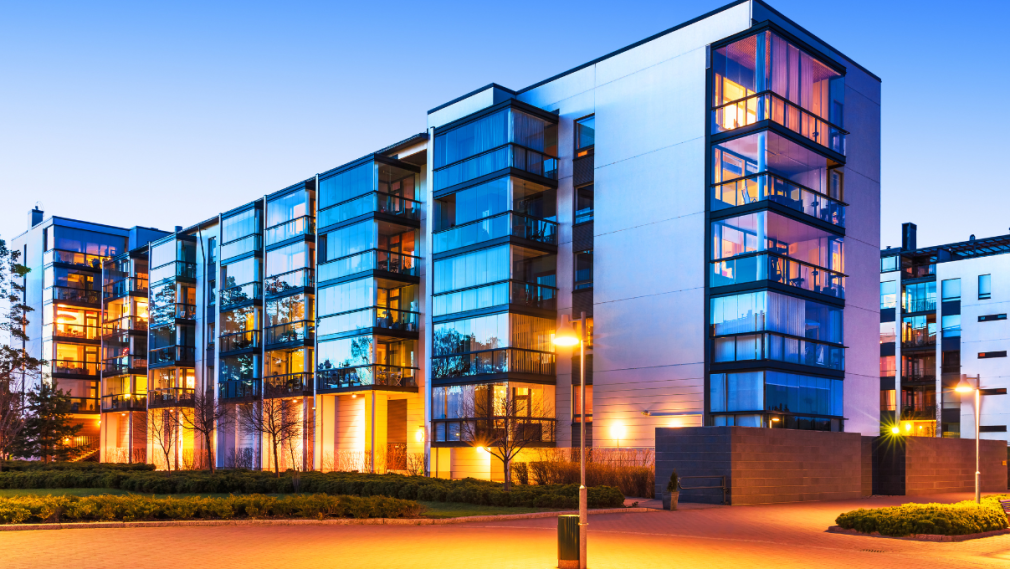The Indian Real Estate market is now among the most attractive assets for investment in the global market. The current and potential future of Indian real estate trends are promising. The country’s economy is growing as well as its infrastructure is booming at a fast pace.
With the rising population, among whom, more than 60% are young. The current generation in India wants dynamic, useful, modern, technology-optimized, and comfy residential & commercial properties.
The rising demand for real estate in urban areas, including tier-2 cities, welcomes new global investors and offers them a seasoned, well-demanded, stable real estate industry with diversified Indian real estate investment opportunities.
The above intro was just a few words about India’s potential. If you’re a real estate investor, this article is going to discuss the current and potential future trends of Indian properties.
Table of Contents:
- What Makes Indian Real Estate A Hub for Global Investment?
- Top Reasons Which Make Investing in Indian Real Estate Attractive for the Global Market:
- Economic Growth and Stability:
- Demographic Trends
- Infrastructure Development:
- Foreign Direct Investment (FDI) Policies:
- Technology Adoption:
- High Returns on Investment:
- Diversification Benefits:
- Challenges and Risks:
What Makes Indian Real Estate A Hub for Global Investment?

The Indian real estate market is majorly divided into two segments- residential and commercial. They hold a current market share of 80% and 20% respectively. The present trends are indicating a tremendous growth in demand for residential properties.
A recent report by CREDAI states these promising numbers and shows the benefits of investing in Indian real estate.
- The Indian real estate market is expected to touch a $1.3 Trillion market size by FY 2034.
- The market size is about to reach $5.17 Trillion by 2047.
- By 2030, there will be 7-crore additional residential demand in India.
- According to the reports from Concorde, this industry’s annual growth (CAGR) will be 9.2% for FY 23-28.
- Regions like Delhi-NCR have witnessed a 3% growth in sales of residential properties.
- Tier-2 cities such as Dehradun, Vadodara, Ajodhya, Kochi, Nagpur, etc are offering better deals to both individual & organizational investors.
- Co-working space will rule the commercial market.
- Digital house hunting, sustainable housing, technology integration, and low-density houses will be the next big trends.
According to Pawan Sharma, MD, Trisol RED, both residential and commercial real estate contribute greatly to the Indian job share market and improve GDP. Both of them boost economic activities, create jobs, support infrastructure development, and even the finance market.
Top Reasons Which Make Investing in Indian Real Estate Attractive for the Global Market:
1. Economic Growth and Stability:
India is emerging as a giant in the world’s best economies. After the effects of the COVID-19 pandemic, the country has significantly shown high growth rates in several industries including real estate. With an overall GDP of 6.29% in 2024, the market currently shows real estate growth in India with stability.
Moreover, real estate is overall a less risky investment compared to other investment methods.
Investing in modern assets such as Bitcoin, Stocks, and Cryptocurrency is uncertain in comparison to real estate investment.
More to it, the interest rates in banking are lower, making savings not very useful as an economic support.
Investing in real estate offers surplus funds with enhanced stability.
Also Read: Pros and cons of Real Estate Investment in India
2. Demographic Trends:
By 2027, India will be the most populous country and this is one of the reasons why it needs a modern solution to real estate demands.
Currently, the Indian real estate market is witnessing a heavy shift towards minimalism, technology, and luxury.
Here are a few demographic trends to watch out to catch Indian real estate investment opportunities:
- The middle-class population is growing as well as their residential demands.
- Nuclear families are in trend.
- Millennials have the largest demographic share and have different needs than the previous generation.
- Flexible, tech-savvy, environment conscious, co-working spaces and co-living spaces are in trend.
- More women are going to be a part of the workforce and their ease of living & safety are much desired.
3. Infrastructure Development:
The Government of India is heavily focusing on infrastructure development to unload the population burden from the urban areas. Some of the proposed projects are as follows.
- Atal Setu,
- Delhi-Mumbai Express,
- Bengaluru Metro,
- Ganga Expressway,
- Vande Bharat Trains,
- Smart Cities,
- Developed Villages, and
- New cities
With enhancing infrastructure, the tier-2 and tier-3 cities are offering perfect opportunities for investors. They need better homes, more connectivity, and amenities for a better standard of living.
4. Foreign Direct Investment (FDI) Policies:
The Indian government had allowed 100% ownership to FDI investors back in 2005 with regulatory reforms in Indian real estate. The recent data shows the continuous growth of FDI in real estate. This makes 81% of the inflow coming from FDI only.
But this raises the concern about national security. Government laws make sure that FDI does not harm the local real estate market. The Indian laws say No to these FDI investments:
- Buying and selling properties.
- Real Estate Trading.
- Using properties as a business venture without participating in development or construction.
Here are the segments where FDI is allowed:
- Township development
- Commercial and residential constructions.
- Infrastructure development such as roads & bridges.
- Real Estate Investment Trust (REIT)
5. Technology Adoption:
The Indian real estate market is heavily into technology. The millennial population has different needs and wants more useful homes in all aspects. They want more privacy, solitude, luxury, and a sense of soulfulness as well.
Here are some of the rising trends desired by the young generation of India:
- Smart Homes.
- Comfy designs.
- Minimalistic infrastructure.
- Environment-Friendly Houses.
- Energy Conservation.
- Green area.
- Network Connectivity.
- Home Automation.
- Voice Controlling Technology.
- Smart Lighting.
Also Read: Benefits of Investing in Commercial Real Estate in India for NRIs
6. High Returns on Investment:
Return on Investment in the Indian real estate industry is comparatively very stable and safer than stocks, forex, or even the new bitcoin investment. The current average ROI rate on residential properties is around 3-5%.
Notably, there are variations based on regions and development. Here are some of the recorded high returns in the Indian property market and in different cities in India.
| City | ROI Rates |
|---|---|
| Bangalore | 8-10% |
| Ludhiana | 5-12% |
| Delhi | 5-13% |
| Pune | 8-15% |
| Gurgaon | 4-8% |
| Noida | 6-10% |
| Chennai | 6-8% |
| Ahmedabad | 3-5% |
The current real estate market is showing an annual CAGR growth of 9.2%. The rising demand for residential properties in tier-2 and tier-3 cities is an indication of improved ROI in coming years promising sustainable real estate development in India.
7. Diversification Benefits:
Using investment diversification makes your portfolio more successful, and promising. Diversification is to analyze property types, diversify your investment goals and invest in them to reduce potential risks.
For diversification, you need to invest in different locations and different types of properties.
Different types of properties-
- Residential
- Retail
- Healthcare
- Office
- Industrial
- Multiple Family
- Social Project
- Nationwide Infrastructure
Here are some of the benefits you will enjoy after diversifying your investment:
- Reduced Risks.
- Safety against the unpredictability of real estate.
- Minimal impact of market fluctuation.
- Growth from multiple sources.
Also Read: Top 7 Important Checklists for NRIs Before Investing in Real Estate in India
8. Challenges and Risks:
While everything is going in favor of investors, challenges will always be there for everyone. The current real estate risks and challenges involve several new factors and not just funding issues.
Here are some of the challenges:
- The modern young generation wants amenities and a comfy environment.
- The cost of construction is getting higher each day.
- Lack of funding.
- Using outdated building techniques
- Regulatory issues by frequent changes.
- Competition in the Market.
- Economic uncertainty plays a vital role.
- Credit risk
- Construction delays
- Debt risks.
Conclusion:
The real estate market is promising in India and welcoming direct foreign investment on a greater scale. From mid-level residential & commercial properties to big nationwide infrastructure projects, the Indian real estate market is rich with opportunities, and partnering with the best real estate company in India will help your investment stabilize in this industry.
In this article, we have discussed how things are changing in the market and what will be its impact on a greater scale in the next 10-20 years.


